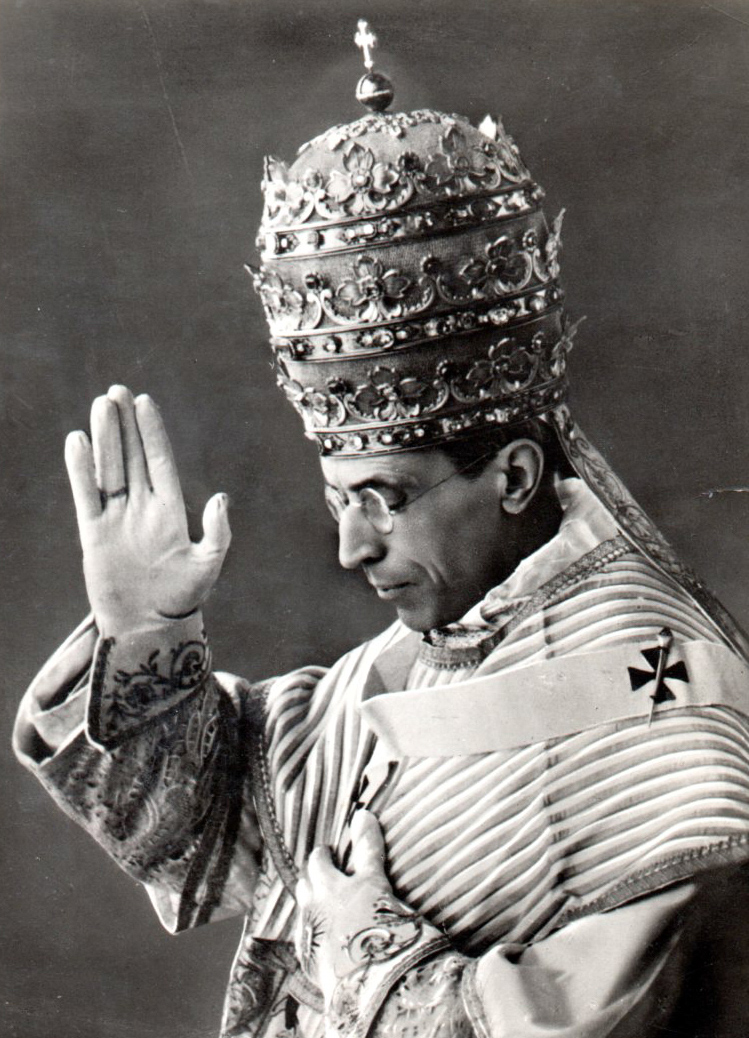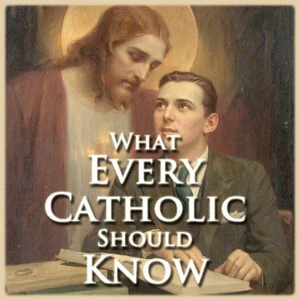(Spring-Summer, 2006)
by Rev. Fr. Anthony Cekada
A summary of Fr. Cekada’s article disproving SSPX’s claim that Novus Ordo bishops are valid bishops
Readers of The Angelus were probably surprised last year when they received the December 2005 issue with its feature article entitled “Why the New Rite of Episcopal Consecration is Valid.” What in the world was this about? And why was a traditionalist magazine published by SSPX putting concelebrating Novus Ordo bishops on its cover?

Traditionalists have always worried about the validity of the New Mass. But the question of whether Holy Orders conferred with the post-Vatican II rites are valid has hardly been discussed at all, even though clergy ordained by bishops consecrated in the new rite — diocesan priests, members of the Fraternity of St. Peter, Institute of Christ the King, etc. — are now offering traditional Masses everywhere. If the bishops who ordained these priests were not true bishops, obviously, the people who attend such Masses adore and receive only bread.
When did the validity of the new rite of episcopal consecration begin to be questioned?
After Benedict XVI was elected in 2005, the topic naturally started to come up more and more. Joseph Ratzinger had been consecrated with the new rite on May 28, 1977. Was he, apart from the question of whether or not he is a true pope, even a real bishop?
In the summer of 2005, a group of French traditionalists published the first volume of Rore Sanctifica, a book-length dossier of documentation and commentary on the Paul VI Rite of Episcopal Consecration (www.rore-sanctifica.org). The study, featuring on its cover side-by-side photos of Ratzinger and SSPX Superior General Mgr. Bernard Fellay, concluded that the new rite was invalid. (Three additional volumes have appeared since.)
This caught the attention of higher-ups in the SSPX in Europe, who were by then negotiating with Benedict XVI to obtain special status in the Vatican II church. How could SSPX’s superiors sell traditionalists on the idea of uniting themselves to a pope who may not even be a real bishop?
When I was in SSPX more than two decades ago, Father Franz Schmidberger was even then promoting the idea that the new rite of episcopal consecration was valid. Now, however, perhaps it was thought impolitic that such a prominent member of SSPX should make this case directly, lest it be summarily shot down or, even worse, provoke a backlash among the faithful.
Instead, the Dominicans in Avrillé, France, a traditionalist religious order in the SSPX orbit, were deputed to try to make a convincing case for validity, thus providing the SSPX superiors with a bit of wiggle room for “plausible deniability.” Fr. Pierre-Marie, O.P., duly produced a lengthy article arguing for the validity of the new rite. This appeared last year in the Dominicans’ quarterly, Sel de la Terre.
SSPX’s European superiors have always considered America the land of independent-minded “hard-liners,” so Fr. Pierre-Marie’s article was immediately translated into English and published in The Angelus with an elaborate and eye-catching layout.
…the Archbishop [Lefebvre] himself had personally told me in the 1970s that he considered the new rite of episcopal consecration invalid.
The article features impressive-looking comparison tables with Latin texts, and is loaded with footnotes. An editorial note touts its “Thomistic” style, and the author assures us that he will “proceed according to the Scholastic method so as to treat the matter as rigorously as possible.”
All this might intimidate the casual reader into accepting the validity of the new rite, or at least stun him into silence.
What is wrong with Fr. Pierre-Marie’s argument?
But things are not what they seem. Fr. Pierre-Marie’s tables, upon close examination, turn out to be comparisons of apples-and-oranges texts. His footnotes cited no works on sacramental moral theology — the discipline that deals with the validity of sacraments. And despite his supposed “Thomistic” style, Fr. Pierre-Marie never managed to focus on the two central questions:

(1) What principles does Catholic theology employ to determine whether a sacramental form (the essential formula in a sacramental rite) is valid or invalid?
(2) How do those principles apply to the new rite of episcopal consecration? With these two points in mind, I sat down to write a study of my own on the new rite. For many years, I had been hoping to find time to address just this issue, and I had already collected a great deal of research material.
The resulting article is entitled “Absolutely Null and Utterly Void” (a phrase from Pope Leo XIII’s pronouncement on the invalidity of Anglican orders), and was published on the internet at www.traditionalmass.org .
I completed the article on March 25, 2006. I noticed later that this date was the fifteenth anniversary of Archbishop Lefebvre’s death. This I considered providential, because the Archbishop himself had personally told me in the 1970s that he considered the new rite of episcopal consecration invalid.
A brief summary of the article follows. I invite readers to consult the original for more details.
I. General Principles.
(1) Each sacrament has a form (essential formula) that produces its sacramental effect. When a substantial change of meaning is introduced into the sacramental form through the corruption or omission of essential words, the sacrament becomes invalid (= does not “work,” or produce the sacramental effect).
(2) Sacramental forms approved for use in the Eastern Rites of the Catholic Church are sometimes different in wording from the Latin Rite forms. Nevertheless, they are the same in substance, and are valid.
(3) Pius XII declared that the form for Holy Orders (i.e., for diaconate, priesthood and episcopacy) must univocally (= unambiguously) signify the sacramental effects — the power of Order and the grace of the Holy Ghost.
(4) For conferring the episcopacy, Pius XII designated as the sacramental form a sentence in the traditional Rite of Episcopal Consecration that univocally expresses (a) the power of the Order that a bishop receives and (b) the grace of the Holy Ghost.
What exactly is wrong with the new rite of episcopal consecration?
II. Application to the New Form.
(1) The Paul VI form for episcopal consecration appears in a special Preface in the rite, and the complete text of the form is as follows:
“So now pour out upon this chosen one that power which is from you, the governing Spirit whom you gave to your beloved Son, Jesus Christ, the Spirit given by him to the holy apostles, who founded the Church in every place to be your temple for the unceasing glory and praise of your name.”
While it seems to mention the grace of the Holy Ghost, the new form does not seem to specify the power of the Order supposedly being conferred. Can it confer the episcopacy? To answer this question, we apply the principles set forth in section I.
(2) The short Paul VI form for episcopal consecration is not identical to the lengthy Eastern Rite forms, and unlike them, does not mention sacramental powers proper to a bishop alone (e.g., ordaining). The Eastern Rite prayers that the surrounding Paul VI consecration Preface most closely resembles, moreover, are non-sacramental prayers for the installations of the Maronite and Syrian Patriarchs, who are already bishops when appointed. In sum, one may not argue (as The Angelus article does) that the Paul VI form is “in use in two certainly valid Eastern Rites” and therefore valid.
(3) Various ancient texts (Hippolytus, the Apostolic Constitutions, and the Testament of Our Lord) share some common elements with the Paul VI consecration Preface that surrounds the new form, and the Angelus article cites these as evidence to support the argument that the new rite is valid. But these texts have all been “reconstructed,” are of questionable origin, may not represent actual liturgical use, or pose other problems. There is no evidence that they were sacramental forms “accepted and used by the Church as such” — a criterion Pius XII’s constitution on Holy Orders lays down. Thus these texts provide no reliable evidence to support the argument for the validity of the Paul VI form.
(4) The key problem in the new form revolves around the term governing Spirit (Spiritus principalis in Latin). Before and after the promulgation of the 1968 Rite of Episcopal Consecration, the meaning of this expression provoked concerns about whether it sufficiently signified the sacrament. Even a bishop on the Vatican commission that created the new rite raised this issue.
(5) Dom Bernard Botte, the modernist who was the principal creator of the new rite, maintained that, for the 3rd-century Christian, governing Spirit connoted the episcopacy, because bishops have “the spirit of authority” as “rulers of the Church.” Spiritus principalis means “the gift of a Spirit proper to a leader.”
(6) This explanation was false and deceptive. Reference to dictionaries, a Scripture commentary, the Fathers of the Church, a dogmatic treatise, and Eastern Rite non-sacramental investiture ceremonies reveals that, among a dozen different and sometimes contradictory meanings, governing Spirit does not specifically signify either the episcopacy in general or the fullness of Holy Orders that the bishop possesses.
The new form fails to meet two criteria for the form for Holy Orders laid down by Pius XII: (a) Because the term governing Spirit is capable of signifying many different things and persons, it does not univocally signify the sacramental effect. (b) The new form lacks any term that even equivocally connotes the power of Order that a bishop possesses…
(7) Before the controversy over it arose, Dom Botte himself even said that he didn’t see how omitting the expression governing Spirit would change the validity of the rite of consecration.
(8) The new form fails to meet two criteria for the form for Holy Orders laid down by Pius XII: (a) Because the term governing Spirit is capable of signifying many different things and persons, it does not univocally signify the sacramental effect. (b) The new form lacks any term that even equivocally connotes the power of Order that a bishop possesses — the “fullness of the priesthood of Christ in the episcopal office and order,” or “the fullness or totality of the priestly ministry.”
(9) For these reasons, the new form constitutes a substantial change in the meaning of the sacramental form for conferring the episcopacy.
(10) A substantial change in the meaning of a sacramental form, according to the principles of sacramental moral theology, renders a sacrament invalid.
III. Conclusion: An Invalid Sacrament.
Accordingly, an episcopal consecration conferred with the sacramental form promulgated by Paul VI in 1968 is invalid — i.e., it cannot create a real bishop.

Priests and other bishops who derive their orders from such bishops are themselves, then, invalidly ordained and consecrated as well. Consequently, the sacraments they confer or confect that depend upon the priestly or episcopal character (Confirmation, the Eucharist, Penance, Extreme Unction, Holy Orders) are invalid as well.
IV. Responses to Objections.
(1) “Context renders the form valid.” Language elsewhere in the rite cannot cure this defect, because an essential element of the form (the power of Order) is not just ambiguous, but missing entirely.
(2) “The form was approved by the pope.” According to Trent and Pius XII, the Church does not have the power to change the substance of a sacrament. The omission of the power of Order from the new form changes the substance of a sacrament, so even if Paul VI had been a true pope, he would not have had the power to make such a change. If anything, his attempt to do so proves he was not a true pope.
* * * * *
The reason why the Novus Ordo rite for making bishops is invalid can be summed up in one sentence: The modernists changed the essential words by removing the idea of the fullness of the priesthood.
My article “Absolutely Null and Utterly Void” is available at www.traditionalmass.org . Those without Internet access can write to the address below for a free printed copy.
I invite readers to photocopy and distribute the article to fellow traditional Catholics, especially to clergy and laity affiliated with SSPX, many of whom may already perhaps have grave reservations about the validity of the new rite.
Was the new rite for consecrating bishops designed to rob the Church of true priests?
I close with a personal anecdote: In August 1977 an old-line traditionalist passed along to me a favorite quote from Fr. Carl Pulvermacher, a Capuchin who had just started to work with SSPX, and would later write for and actually print The Angelus. “Once there are no more valid priests,” Fr. Carl would say, “they’ll permit the Latin Mass.” Prophetic words — but little could he have suspected that his own magazine and the superiors of SSPX themselves would one day help fulfill them!
For a printed copy of “Absolutely Null and Utterly Void,” contact: St. Gertrude the Great Church, 4900 Rialto Road, West Chester OH 45069, 513.645.4212. A donation to cover postage is always appreciated.
–Taken from the Reign of Mary Quarterly Magazine, Issue 123


